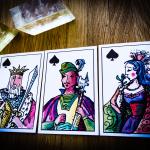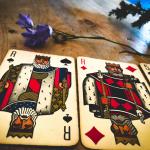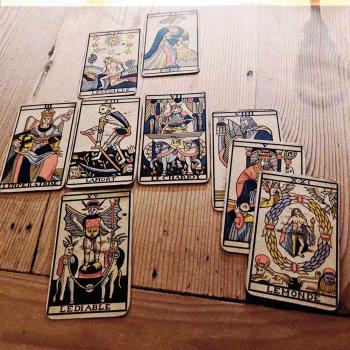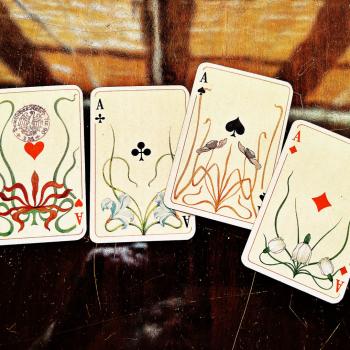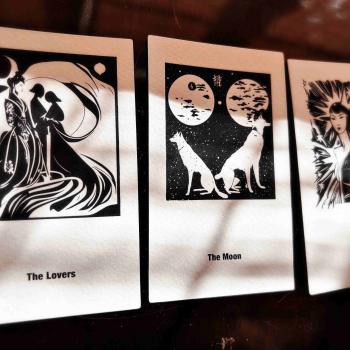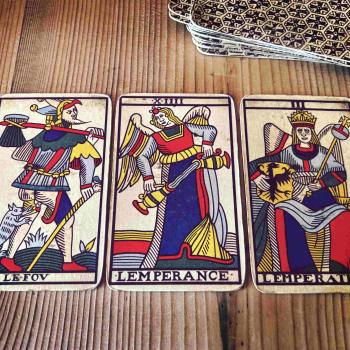
Because it’s counterintuitive, the prevalent view of the symbol is to regard it as belonging in the category that we call ‘intuition’.
Insofar as we can argue that the intuitive faculty is a visual faculty, I can see why the symbol, steeped in visual imagery, should be thought of as having to do with the creative part of the brain, the part that dreams in images and weird translations.
In reality, however, all that we call ‘symbol’ is really just a label, and the cognitive faculty that enables us to label belongs to the rational mind.
Next time you pick up your cards, ask yourself:
How much is my thinking in tarot terms label-driven, not intuitive-driven at all?

I’ve written extensively on what I make of intuition, as I always equate intuition with pure clarity, not dream, fog in the head, and bumbling in the dark, however creatively (see for instance my essays on reading cards for precision, in intuitive trifecta, or generally about what I think of how the tarot works).
But in the context of an opposition between intuition and the symbol as label, I’m afraid to say that the symbol loses the creative game.
Structuralist and poststructuralist literary critics have already pointed to the problem with the symbol and its lack of substance, and the Zen folks way before have also deconstructed the pants out of the symbol, also pointing to the ridiculousness in elevating belief to the status of reality via some arbitrary sign.
But it occurred to me today that many in the cartomantic world don’t realize what is at stake when we place intuition next to the symbol, with many mixing the sources for the two.
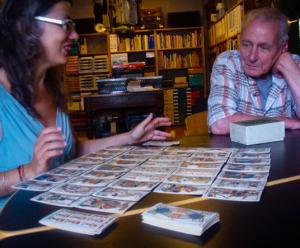
I was prompted by these thoughts, because I was reminded of a fun discussion with collector K. Frank Jensen, when he first showed me his precious Carolus Zoya Marseille tarot, the only original in the whole world.
He watched me going over it, and asked: ‘Why do you like it so much?’
I said: ‘Because of the tulips.’
‘That’s it?’ He asked again, making some big eyes.
‘Well, no,’ I said. ‘I also like it because it’s so soapy, and silky to the touch.’
He made even bigger eyes.

See, what this exchange reveals is the following:
There’s a difference between reading and seeing. Frank’s questions were related to reading; reading the culture and the history behind his treasure, decoding labels and the symbol, and marveling at systems of correspondences. All belonging to the rational mind and its joy in constructing meaning.
Me, I was just behaving in an uncultured way, being oblivious to all that to the point of ignorance. I was seeing beyond reading. I was seeing smell, and touch, and form, and color. I was seeing harmony and balance, space and emptiness.
It goes to show. Some are intuitive, others are rational.
Meanwhile, the Carolus Zoya is safe with me… under the Popess’s broach insignia, a camellia, not a tulip.

♠
Stay in the loop for cartomatic activities.


